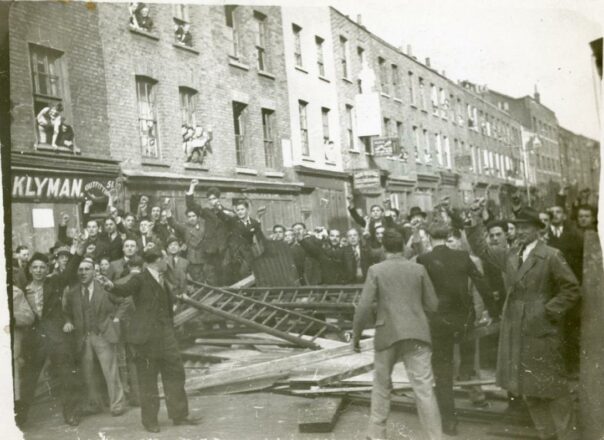
The enemies of the working-class will arrive in yachts and limousines, not in small boats
(banner seen in Bristol on Wednesday 7 August 2024)
If ever I lie dying on a Nazi street, there’ll be ten dead fascists at my feet
(anti-fascist trad)
Introduction
After a week or so of protests and riots by right wing nationalists and racists in early August, largely orchestrated on social media by far-right propaganda, lies and distortions, we are now faced by a police and government narrative promoted by the mainstream media that claims the state stopped the violence. This they assert was down to the harsh sentencing of those arrested and a mass police presence on the streets.
The fact is that most of the mass police mobilisations and serious charges came after the violence had already stopped. In Bristol we were somewhat cynical about Starmer’s supposed ‘iron fist’ when it came to arrestees who went out to terrorise and injure refugee families, burn down hostels and attack police. The numerous riot charges and long sentences (2-14 years) given to those who opposed Tory anti-protest laws in the Kill the Bill demonstrations in Bristol in March 2021 have not been forgotten here. The ‘iron fist’ of Boris Johnson, Priti Patel and Suella Braverman certainly wrecked the lives of a lot of Bristolians protesting about social justice. Sadly, it appears that Starmer and the Labour Party are now chasing right-wing tropes like ‘two-tier policing’ and hiding behind the law, by imprisoning perpetrators of racist violence along with those who put themselves on the line to protect themselves, people and property from the racist attacks.
What the mainstream media and police did do successfully during the ‘riot week’ was to spread and enhance a growing atmosphere of fear, stoked by the far-right on social media. Pushing the story that the nationalists were planning a hundred rallies across the UK on Wednesday 7 August, whilst telling everyone to stay in their homes and not to protest, the authorities promoted atomisation, community weakness and even terror. In Bristol, health-centres, council services and schools were shut down early, whilst worried shopkeepers and NGOs behaved like lemmings and boarded up whole streets anticipating a nationalist ‘Kristallnacht’. Mosques, churches and refugee centres issued statements in line with police advice to stay off the streets. All of this played into the hands of far-right strategists, demonstrating their power, weakening the opposition and promoting fear.
Despite this atmosphere, thousands of people all over the county from Birmingham to Bristol, from Newcastle to London defied the media and police and refused to be frightened off the streets. Rather than more attacks on hostels and refugee centres leading to the supposed ‘Kristallnacht’ on 7 August, instead we saw a series of growing counter-demonstrations that opposed far-right gatherings and defended targets of the racists, in some cases violently. These explicit shows of numbers and force created feelings of solidarity amongst front-line communities, as residents stood side by side regardless of ethnicity or religion. On the evening of 7 August in Bristol, as 2,000 people gathered on Old Market and West Street, the feeling of togetherness and strength was palpable. This was the best antidote to a week of fearmongering, and we all knew it was our movement that put the mockers on the wave of racist, nationalist disturbances, not Starmer, the courts or the cops. As one member of my sports club angrily noted, at no point has Starmer mentioned the counter-protests. Why is this?
What happened in early August 2024 is nothing new, neither the emergence of nationalist, racist violence nor the thousands who came out to oppose it. In this article we take a brief look at the last 100 years in our fair city (and beyond) to demonstrate it has always been people power, not the state, that has successfully opposed fascist and racist violence and protected our communities.
1919 – Race riots in Liverpool and Cardiff
The so-called ‘race riots’ [ 1 ] which broke out between January and August 1919 in seven ports [ 2 ], were some of the most serious and sustained instances of public disorder in twentieth century Britain. During these riots, white working-class crowds targeted black seamen, their families and black-owned businesses and property in these ports. Other black people, including military personnel and skilled workers also came under attack from white crowds. The 1919 rioting in the ports was primarily caused by severe post-World War 1 competition for jobs, especially in the merchant navy. The lack of work was aggravated by an acute housing shortage. For the British working class, war service was part of a ‘contract’ struck with the state. When the promised post-war benefits such as job opportunities, and better housing, did not materialise, there was widespread public protest. Rioting was an extreme form of direct action and racist behaviour and motivations were particularly evident in the actions of the white rioters in 1919.
Liverpool
In 1919, demobilization had increased Liverpool’s black population to about 5,000. They were mostly working class and out of work. Black Liverpudlians had their employment terminated at local oil mills and sugar refineries because white people refused to work alongside them. In May 1919, white rioters began to attack black citizens in the streets, as well as their businesses and homes. The violence in Liverpool was orchestrated by well-organised gangs, hundreds and thousands strong, who hunted black men on the streets.’[ 3 ] Hostels for black sailors were attacked by rioters and many houses were targeted and set alight. At the height of the violence on 9 and 10 June mobs of youths and young men roamed the streets, ’savagely attacking, beating, and stabbing every negro they could find.’[ 4 ] The police provided little protection for black people in their communities, so many sought sanctuary from white gangs in local bridewells (petty offenders’ prisons) and fire stations.
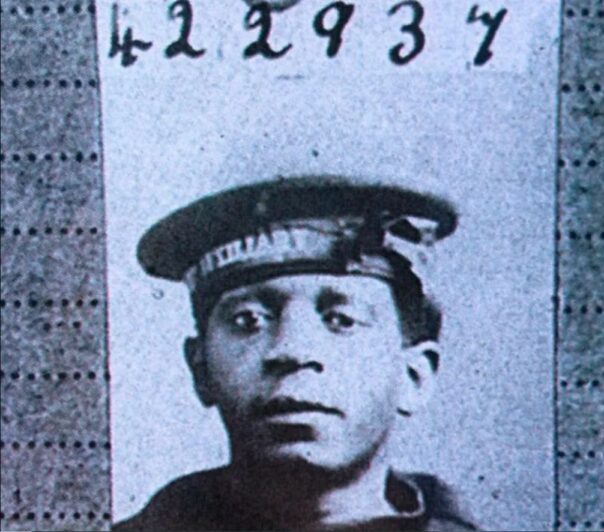
The response of central government to the riots, rather than protecting black workers, war veterans and their families, was to gather information on black port communities and to place them under ‘supervision’ through various ‘Aliens’ Orders and Acts. Whilst the rioting was still taking place, an inter-departmental committee was set up to pursue an active repatriation programme with the aim of clearing black Britons from Britain itself, dispersing them around the British Empire. There were even plans to intern the entire black population of Liverpool in abandoned army camps outside the city, before being repatriated.
Cardiff
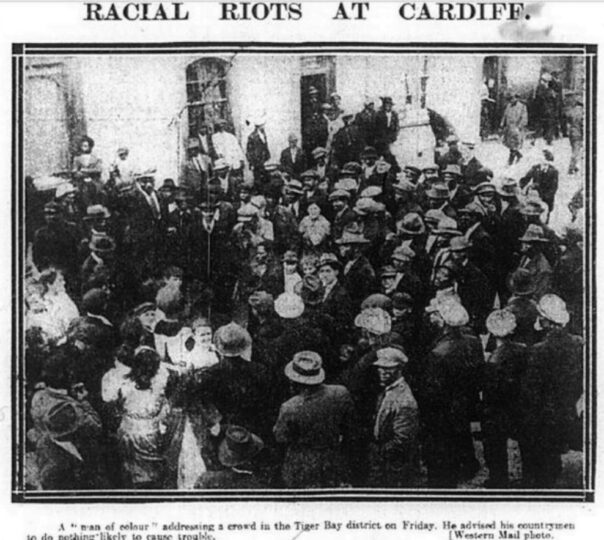
The whole of the city’s police force was concentrated in a cordoned-off area of black settlement in Tiger Bay. Military force was also used as both mounted police and infantry blocked the way to streets where black people lived. However, the Western Mail reported, ‘the efforts of the police were confined to keeping the white men from damaging property.’[ 6 ] Property being deemed more important than people, black communities under siege had two choices – flight or fight. A few did leave but most chose to stay and, if need be, to fight. As one participant noted:
The mobsters didn’t get things all their own way. Some of them were badly cut up; negroes started carrying guns and razors to defend themselves. More mobsters got hurt in Cardiff’s Tiger Bay than any other part of Britain, for Tiger Bay had the toughest negroes there were in Britain.[ 7 ]
As in Liverpool, a local repatriation scheme was established but not everyone involved, wanted to be in it, and part of Cardiff’s black population indignantly rejected the offer. They insisted on claiming their rights as British subjects to get fair treatment and remain in the city. However, in Cardiff in the 1920s, black men were still forced by the police to register as aliens, even though they had passports, discharge papers from war service in the armed forces, and birth certificates, all demonstrating their status as British subjects.
During the hot summer of 1919, Britain’s black communities had to fend for themselves as police protection was limited and there were no large numbers of white allies out on the streets to support them against racist attacks. In 1919, the divisive role of racism in Liverpool and Cardiff was overt. White workers in bitter economic competition with black workers were mobilized into lynch mobs led by armed groups. [ 8 ] Felix Hercules in an African Telegraph editorial commented, ’The supineness of the Imperial Government during the race riots drives home the fact they approve of them, that they are in line with Imperial policy.’[ 9 ]
To read more about this period, see this article by Silu Pascoe: The Race Riots of 1919 in Liverpool and Cardiff.
1930s – Mosley and the British Union of Fascists
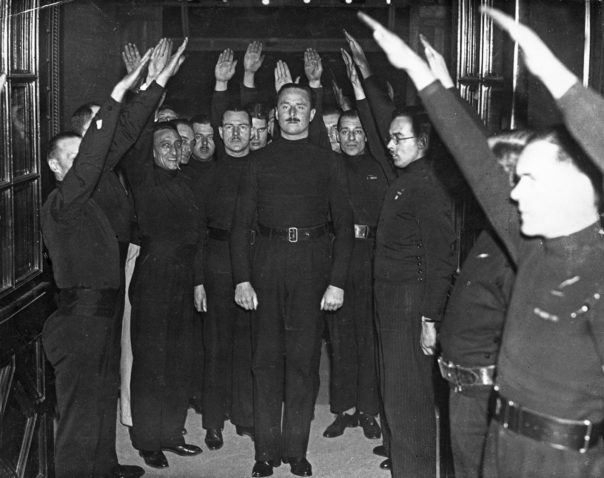
In 1932 ex-Tory and Labour Party MP, aristocrat and 6th Baronet, Oswald Mosley formed the British Union of Fascists (BUF). This drew together existing fascist groups founded in the 1920s, melding them into the most important pre-war far-right organisation in Britain. Exploiting the economic crisis that became known as the ‘Great Depression’ the BUF sought to divide the working-class along racial and religious lines, break the power of the left and trade unions and create an authoritarian corporatist state under Mosley’s dictatorship. Virulently nationalist, antisemitic and racist the BUF actively sought alliances with fascist parties in Europe, had numerous Nazi supporters in its membership and was backed by powerful figures in the British ruling class such as the press baron Lord Rothermere, owner of the Daily Mail. Within the BUF ranks were Lords, MPs, businessmen, military officers, intellectuals, writers, journalists, sports stars and even suffragettes.
The BUF targeted Bristol as one of its recruiting grounds, setting up its offices on Park Street in Clifton and organising mass rallies with Mosley speaking several times at the Colston Hall (now the Beacon) from 1934-1936. Unfortunately for Mosley and the BUF, and unlike 1919, the British working-class largely saw through his hateful rhetoric and were not about to turn their anger upon their workmates and neighbours. Hundreds, and then thousands of working-class Bristolians turned out to enthusiastically and physically oppose the BUF and their paramilitary wing, the Blackshirts, at every opportunity. From the inner-city slums to the newly built council housing estates of south Bristol the BUF could not appear in public without eliciting the wrath of crowds of workers and their families. Inner-city Bristol became a battleground as anti-fascist crowds protested, broke up BUF street meetings and attacked their rallies.
Following humiliating defeats in Melvin Square, Knowle West in August 1936 and in October in Cable Street in London, combined with the banning of paramilitary style marches, BUF membership declined from its peak in 1934. The fascist coup against the Spanish Republic in 1936 which led to the Civil War, galvanised anti-fascists, particularly after the intervention of fascist Italy and Nazi Germany on the side of General Franco. Despite the BUFs attempts in the late 1930s to encourage public support for appeasing Hitler, the organisation was banned in 1940 and much of its leadership interned.
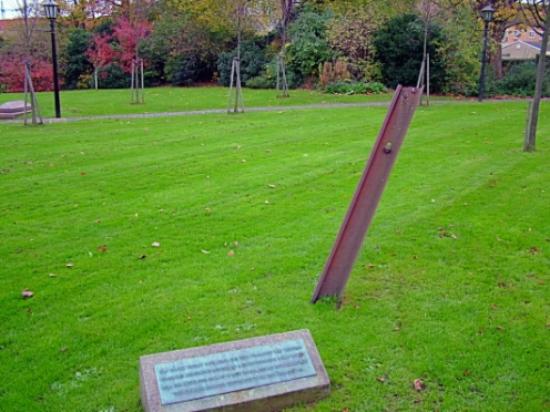
Within a year the Nazis were terrorising our grandparents by aerial bombing, amongst other targets, ironically the rallying sites of the BUF in Bristol including Melvin Square and the corner of Guinea Street, Redcliffe. Castle Park shopping district was levelled and diluted torrents of blood streamed down the pavements and gutters as the rain washed the bodies buried under the rubble. These were real ‘rivers of blood’, the product of rampant nationalism and fascism.
1940s-1960s – From the 43 Group to the 62 Group
One might have thought that the horrors of World War II and the genocidal policies of the Nazis would have led to the dissolution of the racist far-right in Britain. Instead, returning Jewish military veterans were astounded to find pre-war fascist parties re-emerging on the streets of London. Distributing antisemitic propaganda, holding public meetings and carrying out violent attacks on Jews and their property, their public activities were often protected by the police. The result was the formation of the 43 Group in 1946, an underground left-wing anti-fascist organisation principally, but not solely comprised of Jewish ex-servicemen. The 43 Group confronted the new fascist parties in meetings and on the streets with the aim of smashing their organisations using infiltration, violence and intimidation. Their main targets in the period were the British League of ex-Servicemen and the revived Oswald Mosley’s new ‘united Europe’ fascist party, the Union Movement.
The demand for labour in the post-war period led to the British Nationality Act of 1948, which facilitated the ‘pull’ for workers from the Commonwealth. Immigration increased substantially and along with antisemitic riots in Manchester and Liverpool the previous year, created the environment ripe for exploitation by the racist far-right. For four years the 43 Group played a major role in supressing the neo-fascists, before disbanding in 1950 when the immediate threat had passed.
Within a decade that threat would re-emerge, marked initially by the violent and murderous attacks by racist gangs on the African-Caribbean community in Notting Hill in west London and unrest in the St Anne’s area of Nottingham in 1958. These were preceded by agitation by Mosley’s revived Union Movement and the racist White Defence League. The police largely failed to protect the black population in Notting Hill and refused to acknowledge the racist motivations behind the violence.[ 10 ] Despite the mainstream image of the African-Caribbeans of Notting Hill being merely ‘victims’, they and their allies responded by defending their community and taking the fight to the racist gangs in London and other cities. As Cecil Gutzmore pointed out in 1993:
What 1958 showed the white manipulators of violence – and I mean the Mosley people, fringe Mosley people, and the white working-class generally – is that if they fucked with black people from the West Indies…they were going to have some trouble coming…we sorted out, as a community, the manipulators of violence against us on a large and organised scale.[ 11 ]
Gutzmore added in retrospect ‘since then [1958], there has been no mass-organized non-state violence against black (Afro-Caribbean) people in this country, because they know what will happen if they come against us in an organised and public way’.
The revival of fascist parties in the late 1950s and early 1960s was met with opposition. The 1962 Committee, better known as the 62 Group, modelled on its 1940s predecessor, was created to deal with the resurgent fascist parties. These included Mosley’s Union Movement and the merged National Labour Party and White Defence League which became the British National Party (BNP) in 1960. Within two years the BNP was to splinter and produce the National Socialist Movement (NSM) and in 1964 the Greater Britain Movement (GBM) whilst in the background the more ‘respectable’ League of Empire Loyalists, led by A. K. Chesterton (cousin of the famous writer G. K. Chesterton) also continued to organise.
Some of the progenitors of these fascist organisations had bloodied themselves by encouraging the racist attacks in Notting Hill in 1958. By the early 1960s they were organising against immigration, the left-wing anti-colonial movement and were encouraging anti-black racism and antisemitism. Throughout the 1960s the 62 Group attacked fascist paper sales, meetings, marches and rallies driving them out of the east end of London and famously injuring Mosley in a massed attack at the Ridley Road market in Dalston. Using sophisticated surveillance techniques, burglary, infiltration and sabotage the 62 Group exposed the fascists numerous arson attacks on Jewish properties, their use of bombs and firearms and the formation of secret Nazi paramilitary groups. The police largely protected the fascists on the streets and by the end of the decade they were focusing their efforts on the anti-fascist left. In 1968 for example, an Assistant Commissioner of the Metropolitan Police issued an order to all Borough Commanders to arrest leading 62 Group activists on sight.[ 12 ]
1970s-80s – Opposition to the National Front
The early 1970s saw the re-emergence of outright fascist parties derived from alliances between their 1960s predecessors, particularly the racist National Front (NF) formed in 1966. In Bristol in 1977 the NF put up 21 candidates for election to what was then the Avon County Council. One of its leaders Martin Webster had said ‘the time has come for us to smash our enemies into a pulp.’ When the Front announced that they would be having a public meeting at Sefton Park Primary school in St Andrews, a protest was organised by the coming together of a number of local left groups. On the night of November 22nd, 1977, some 50 Front supporters turned up, protected by a phalanx of police. Amongst the hundreds of counter-protestors there were six arrests, all of them opponents of the Front. Other proposed NF meetings in south Bristol were met by similar protests.
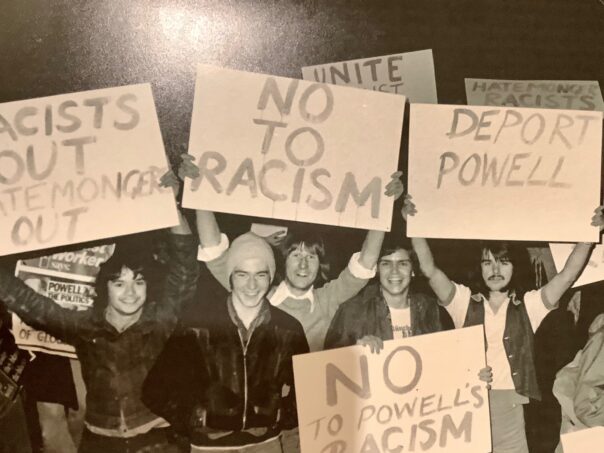
This led to the creation of a branch of the Anti-Nazi League (ANL) and the emergence of Rock Against Racism (RAR) in Bristol. Some of the ANL members distributed a leaflet to Bristol City fans as they headed for Ashton Gate – ‘If you’ve half a mind to join the Front, don’t worry that’s all you need.’ The Bristol Red Action group favoured direct physical confrontation with the NF and continued the tactics developed in the late 1970s of organised street-fighting squads.
In London, pitched battles occurred when the NF, defended by the police, tried to march or meet. Some of the most notable confrontations were in Red Lion Square (1975) and in multi-cultural areas such as Lewisham (1977) and Southall (1979). At the former, anti-fascist student Kevin Gately died during clashes with police and at the latter, the Special Patrol Group killed another demonstrator, Blair Peach. The rise of the NF, attacks on Asian people including the murder of Gurdeep Chaggar in 1976, along with racist immigration policies led to the formation of new anti-racist community defence organisations such the Southall Youth Movement which expanded into the countrywide Asian Youth Movement.
Alongside the racist violence unleashed by the NF and the neo-Nazi British Movement (BM) in the 1970s was the issue of the war in Northern Ireland. The British far-right were renowned for their hatred of Irish Republicanism, which brought them into direct conflict with Irish communities in London, Liverpool, Birmingham and other cities. The siege mentality and anti-Irish prejudice and propaganda spouted by the right-wing press as the IRA brought the war to Britain’s streets created a perfect environment for the fascists to exploit nationalist feelings. Fascist groups often targeted meetings, marches and rallies in support of civil rights and a united Ireland. However, physically taking on the growing numbers of Irish Republicans in the anti-fascist movement was not easy, as the NF and BM often found to their cost.
In the parliamentary election of 1979, every National Front candidate lost his or her deposit. But that did not mean that racism had been defeated in the UK. Thatcher had won the election for the Tories after proclaiming that ‘this country might be rather swamped by people of a different culture.’ It took the St Pauls rising of 2 April 1980 to remind Bristol. In the words of After the Fire the Bristol National Union of Teachers report on the riot, ‘it was in essence an expression of frustration and anger built up over many years [in a society] that discriminates against black people.’ Initiating in multi-ethnic inner-city areas, the following summer of 1981 saw a huge wave of anti-police and anti-racist riots sweep England, which shook Thatcher’s government to its core.
Read more about this era in Colin Thomas’s Facing up to the Fascists.
1980-90s – Anti-Fascist Action
The emergence of Anti-Fascist Action (AFA) in the mid-1980s was a product of the continuing presence of the far-right in the form of the British National Party (BNP) and the Nazi youth organisations such as Blood and Honour (B&H) and Combat 18 (C18).[ 13 ] Initially a coalition of left-wing groups, AFA effectively became an alliance of anti-state, anti-fascists featuring Red Action, football fans and anarchist groups. AFA’s position was that the state could not be relied upon to defend us from fascist violence or a takeover. Twentieth century European history had demonstrated numerous times that if a significant section of the ruling class decided fascism was a useful form of government, then regardless of so-called ‘democratic freedoms’, the state would comply (as in Italy 1923, Germany 1933, Spain 1936 and potentially with the BUF in the UK in the 1930s).
Throughout the late 1980s and 1990s, AFA and its allies, consistently and violently opposed the ‘Hitlerite’ tactic of the BNP, B&H and C18 to use street violence to terrorise their political opponents and non-white communities into submission. From intelligence gathering, counter-leafletting and street festivals to massed attacks on the fascists such as the Battle of Waterloo in 1992, AFA pushed a twin track strategy of ideologically opposing fascism in working class communities and physically opposing them on the street. The success of AFA and its supporters led the BNP to change its strategy away from seizure of power on the streets towards electoral means to try to capture local councils and gain MPs. This trend was famously confirmed by one of their leaders stating in 1993 that there would be ‘no more meetings, marches, punch-ups’. Withdrawing from the streets and replacing the skinhead regalia, uniforms and swastikas with flash suits, their leader Nick Griffin tried to make the BNP ‘respectable’.
In Bristol a branch of AFA operated for many years gathering intelligence, counter-leafletting and, when necessary, physically attacking ‘the fash’. This kept the waning fascist groupings on the backfoot and looking over their shoulders. The Bristol group also attended national callouts in London, Dover, Nottingham and other cities in the 1990s, helping to build AFA fighting blocks of several hundred. Often blissfully unaware of this violent underground war, politicians and liberal commentators in Bristol believed ‘their city’ (sic) free of fascism, when Bristolians were actively putting themselves and their futures on the line to make this a reality.
2000s and new developments of Anti-Fascism and the Far Right
In 2009 a new far right threat emerged; a street movement that had a leader in Luton’s Stephen Yaxley-Lennon or ‘Tommy Robinson’ as he called himself. The English Defence League (EDL) presented itself as an anti-Islamic extremism movement but soon was using all the usual tropes of the far right – anti-immigration, Islamophobia[ 14 ] and wanting a Britain of a unified culture. The EDL started by building its base amongst football supporters and their crews. It did cause confusion to many by having a ‘Black and White Unite and Fight’ banner on its first demonstration attempting to present itself as not racist but worried about cultural change and Islamification in Britain. Lennon successfully started to build a movement that developed a sizable following and street presence but had no clear political narrative beyond being anti-Islamic extremism as they saw it.
At the same time, anti-fascists were developing a new loose structure based around the Anti-Fascist Network (AFN). Bristol and it’s Anti-Fascist group (Bristol Anti Fascists – BAF) was aligned to the network but also worked with other groups, therefore retaining autonomy, but was a key part of this organisation and built a reputation for being strong and mobile; traveling to many places around the country to oppose fascists when they tried to organise on the streets. The organisation (AFN) stressed that it was non-hierarchical and had no fixed political position but wanted to work with others to defeat fascism on the streets. BAF saw itself as a militant anti-fascist organisation[ 15 ] which would confront fascists directly and was mainly made up of anarchists and leftists who were often involved in other work e.g. anti-capitalist, anti-state, supporting refugee rights and stopping deportations, often pro-Rojava, anti-ISIS, often would develop pro-trans rights support and was key in delivering mutual aid during the Covid 19 crisis through Bristol alternative social centre BASE in Easton.
Bristol Anti-Fascists mobilised against the EDL in 2012 when they tried to march in Bristol against refugees and supposed ‘Islamification’. They were given Queen Square by the Police who kept the 300 or so EDL members, many of whom were from other parts of the country, away from the 3,000-5,000 opposition which included the BAF/AFN and many other groups. The EDL were outnumbered, and street battles developed into the evening as the demonstration and speeches finished and EDL members tried to make their way home or to the train station.
In 2013, arguably a more worrying far-right march because it was largely locally organised and supported, took place after the death of Lee Rigby. Rigby, a soldier, was murdered in London in 2013 by two men claiming they were acting for Al-Qaeda in the UK in protest against the British occupation of Muslim land. Under the guise of ‘Help for Heroes’, the charity for British war veterans, around 100 or so Bristolians marched down Church Road in east Bristol from St George to Lawrence Hill. A relatively small group of anti-fascists opposed their attempt to have a go at mosques in nearby Easton, before they were corralled by police into the St Georges Hall pub. As the evening wore on and the news spread many local young black and white youth came onto the streets to surround the police, hoping to have a go at the racists who were now wrecking the pub in desperation to escape. Eventually the racists, barring a few arrests, were allowed to leave by the police and rapidly disappeared from the area.
Fractures in the EDL nationally were reflected in Bristol, with the collapse of the local branch into the smaller Bristol Defence League (BDL), made up of a small core of Bristol City fans who have been ever present at Nationalist gatherings in the city. The EDL only tried one more mobilisation in Bristol in 2016 when a tiny mix of the EDL (about 30 in total) and a group calling itself the South West Infidels marched from Hotwells to College Green which had been completely surrounded by high metal panels to keep the fascists away from view of the public and to protect their demonstration. Again, a large anti-fascist turnout tried to block the road and stop the march only to be pushed back by the police. Attempts by the BDL to attack an anti-Brexit Party meeting in central Bristol failed when veteran Bristol AFA activists took their meeting point in the Bay Horse pub and fronted them out, whilst police surrounded the building.
Since then, there have been a number of attempts at far-right marches, but all have been relatively small and were met by much larger anti-fascist mobilisations. The most notable was when Anne-Marie Waters, anti-Islam Party ‘For Britain’ attempted to call an ‘Anti Black Lives Matter’ protest in Bristol in April 2022.[ 16 ] In response to this a collective organisation of anti-fascists, including BAF and other adjacent groups set up Bristol Against Hate (BAH), a wider organisation than the strict Anti-fascist group. In conjunction with many community groups and trade unions, BAH organised a counter protest at the spot where Waters wanted to demonstrate – the space where Colston’s statue had stood in the centre of Bristol. Waters cancelled the demonstration two days before having seen the huge response to BAH’s call out for a counter protest on social media. ‘For Britain’ folded not long after this event with criticism that they had given in to ‘ANTIFA!’, the general term now used by the far-right for those opposing fascism.
August 2024…
Bristol has cemented a reputation as an anti-fascist and left leaning ‘red city’ within far-right circles. This reputation has been built by anti-fascist activists and people sympathetic to that position over many decades. The demonstration called ‘Enough Is Enough’ in response to the murders of three little girls in Southport is the most recent attempt by the far-right and those who have been drawn into its narrative to show a street presence in Bristol. The confusion and incorrect social media posts claiming that the murderer was Muslim, had come over the channel on a small boat and was on a MI6 watch list,[ 17 ] played a huge part in mobilising the crowd that emerged in Castle Green on Saturday 3 August 2024. What we now know is the killer was from a family originally from Rwanda and was born in Cardiff.
This though, is not the only motivation for the presence of around 400 far right protestors that day. Various acts of terror, including the bombing of the London tube network and a bus on 7 July 2005, the killing of Lee Rigby in 2013 and the Manchester Arena bombing in 2017, right up to the Southport murders have provided fertile ground for the creation of conspiracy theories and false narratives. These include ‘two-tier policing’, lies about the motivations of murderers and an anti-state narrative that many on the far right have bought into. These in combination with Tory party tropes to ‘stop the boats’, Suella Braverman describing pro-Palestine marches in the UK in 2024 as ‘hate marches’ and relatively recent news platforms like GB News pushing the anti-illegal immigration line and presenting a far to the right political position on most social issues, have created the environment for the far-right to flourish. The run-down of the National Health Service, housing now a huge issue given property speculation, the cost of renting, the lack of affordable homes and the cost-of-living crisis, have all fed into the pot of anger that Britain is at present. Stephen Yaxley-Lennon remains a key player, well at least virtually, posting videos from his holiday apartment telling people to fight back and not let the immigrants take over.
The new version of the EDL, the Democratic Football Lads Alliance and Football Lads United remain sites of organisation for Robinson and other figures trying to motivate a far-right movement. Reform as a political party gaining four million votes in the general election demonstrates there is a sizeable audience for the anti-immigration and nationalist positions. Actual fascist parties exist but not with the reach and organisation of the National Front of the 1970s or the British National Party of the 1990s. Patriotic Alternative (PA) led by former BNP youth leader Mark Collet and Homeland – a split from PA, are small but influential fascist parties and do have some reach into the current street movements.[ 18 ]. The demonstrations of early August show that the collection of foot soldiers for Lennon and Farage are linked into social media networks and news channels that are influential and growing, but who also have small but tight social networks within their football clubs and communities. The turnout against the ‘Enough is Enough’ demonstration was encouraging on the 3 August in Bristol. On Wednesday 7 August social media posts threatening immigration solicitors and community centres across the country were met by a huge response on the street, which was even more promising having come from local communities rather than just activists.
One observation we can make is that Stephen Yaxley-Lennon’s demonstration in London in July, two days before the Southport murders was attended by approximately 20-30,000 people.[ 19 ] The counter protest organised by the SWP led by Stand Up To Racism only managed to attract about a tenth of that number. The support Robinson and Reform have got is a warning that anti-fascists have to rise to the task and build levels of support, as recent years has seen a decline in the numbers of those on anti-fascist actions. Organisations such as BAF, the AFN and the newly emerged Football Lads and Lasses Against Fascism (FLAF) which includes some ex-AFA and Red Action members, show there are strong organisations with class politics at the centre that can play a part in rebuilding the anti-fascist movement. Bristol has a long and strong tradition of anti-fascism and can play a key part in the process of countering the ideas of Robinson et al. Class politics should be at the forefront of that struggle and the analysis of the issues facing us all. And as the slogan seen on the counter protest to the recent far right states: ‘The enemy of the working-class will arrive in yachts and limousines, not in small boats’!
Thanks to the members of BRHG who contributed to this article.
This article is dedicated to all those who have been arrested, imprisoned and killed by the British state in opposing racism and fascism.
August 2024
- [ 1 ] The article uses Jacqueline Jenkinson’s definition of ‘race riot’. She states, ‘By riot I refer to a dispute between large numbers of people involving the use of sticks, knives and often revolvers; when the dispute is between Whites and non-Whites the result is described as a ‘race riot’. J. Jenkinson The 1919 Race Riots in Britain: A Survey’ in L. Rainer, L. & I. Pegg (eds). Under the Imperial Carpet: Essays in Black History, 1780-1950. (Crawley: Rabbit Press, 1986.), pp.182-207. [back…]
- [ 2 ] The seven ports were Glasgow, South Shields, Salford, Hull, London, Liverpool, Cardiff, Newport and Barry. [back…]
- [ 3 ] D. Olusoga Black and British: A Forgotten History (London: Pan, 2017) p.457. [back…]
- [ 4 ] Inspector Hugh Burgess, ‘Racial riots’, 18 June 1919, copy in TNA CO318/352. [back…]
- [ 5 ] This sum is equivalent to £958,000 in 2023 using the ‘GDP per capita’ calculation from measuringworth.com https://www.measuringworth.com/index.php. [back…]
- [ 6 ] Western Daily Mail, 13 June, 1919. [back…]
- [ 7 ] E. Marke In Troubled Waters p.31. [back…]
- [ 8 ] P. Fryer. Staying Power p.312. [back…]
- [ 9 ] F. Hercules ‘Discrimination and Disintegration’, editorial African Telegraph, 1/13 (July-August 1919), p.253. [back…]
- [ 10 ] Allan Travis “After 44 years secret papers reveal truth about five nights of violence in Notting Hill” Guardian 24 August 2002. [back…]
- [ 11 ] About a third of the 100 or so people arrested in the Notting Hill disturbances were non-white and were charged with offences ranging from grievous bodily harm to affray and riot. Travis, Guardian 24 August 2002; Gutzmore, Cecil “Carnival, the state and the black masses in the UK” in Black British Culture and Society edt. Kwesi Owusu (London: Routledge, 2000) p.337. [back…]
- [ 12 ] For more on the 62 Group see “A history of the 62 Group” Libcom. https://libcom.org/article/history-62-group. [back…]
- [ 13 ] The definitive histories of AFA written by leading figures are Sean Birchall, Beating the Fascists: The Untold Story of Anti-Fascist Action (London: Freedom, 2010) and Dave Hann and Steve Tilzey, No Retreat: The Secret War Between Britain’s Anti-Fascists and the Far Right (Milo Books, 2003). [back…]
- [ 14 ] What is Islamophobia? Racism, Social Movements and the State, Edited by Narzanin Massooumi, Tom Mills and David Miller, Pluto Press 2017. [back…]
- [ 15 ] Bray, Mark (2018) ANTIFA – The Anti-Fascist Handbook, Melville House publishing. [back…]
- [ 16 ] James Poulter “Far-right postpone anti-Black Lives Matter rally in Bristol celebrating Colston’s legacy” The Bristol Cable, 29 March 2022. https://thebristolcable.org/2022/03/far-right-anti-black-lives-matter-rally-bristol-colstons-legacy-tommy-robinson-for-britain/ [back…]
- [ 17 ] Andy Gregory “How lies and disinformation about Southport knife attack suspect led to riots” The Independent, 31 July 2024. https://www.independent.co.uk/news/uk/crime/southport-attack-riots-far-right-social-media-b2588628.html. [back…]
- [ 18 ] Red Flare “Convicted Neo-Nazi Terrorist was at Southport Riot” RF Unmasking the far right, 01 August 2024. https://redflare.info/articles/convicted-neo-nazi-terrorist-southport-riot/. [back…]
- [ 19 ] Joe Mulhall “Tommy Robinson Leads Huge Far-Right Demonstration in London” Hope not hate 27 July 2024. https://hopenothate.org.uk/2024/07/27/tommy-robinson-leads-huge-far-right-demonstration-in-london/. [back…]





There’s some good stuff in here but very little self criticism or analysis of weaknesses or mistakes in the anti fascist movement.
The aim of the article was to expose the long history of non-state community and self-organised responses to racist and fascist threats and attacks, rather than carrying out a critical analysis of their politics and approaches.